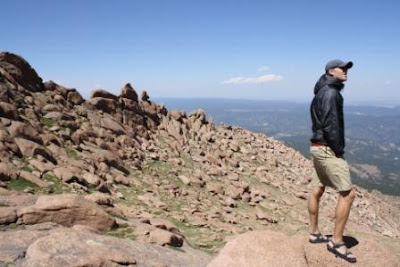I have been begging Craig to go kayaking for the past couple years. No, no, it’s not that he didn’t want to go. It’s just that the timing never really worked out. We always ran out of time, or we didn’t plan enough in advance, etc. I’ve never been, but he’s done it a few times. I’m not really sure what the appeal has been for me…maybe just being out on the open water and in charge of your own pace…who knows? Well, ever since we started planning the trip to NZ, Craig has promised that we would go kayaking in Abel Tasman National Park, accessible only by watercraft. The travel guide company Lonely Planet apparently rated kayaking in Abel Tasman as the #1 thing to do in NZ. Well, we finally did our homework and booked a guided day trip several weeks in advance. We were finally going!
Part of the excitement of travel is the planning phase, so the fact that we had this trip booked for so long meant we got to be excited for a long time leading up to the day. The bad part about booking outdoor trips in advance is that you never know what the weather is supposed to be like. Well, we crossed our fingers and hoped for the best. I would say we got something in between fantastic and crummy. While it was overcast most of the day and didn’t provide the best scenery, it was cool, breezy, and the sun wasn’t beating down on us the whole day, which was nice.
We started out at 8:00 am. with our guide Hamish (pronounced Hay-mish) and two other girls from Switzerland. After a briefing on safety and equipment, we finally headed out into the Tasman Bay.
Most of the morning we followed the coast line of Abel Tasman park where we were able to see and learn about different species of birds. Hamish also told the story of how New Zealand was discovered in the 1600s by the Dutch explorer, Abel Tasman, and his skirmish with the Maori people of that time. The first really cool thing we saw was a little sea cave we were able to paddle right up into:
We paddled for about 2 ½ hours and then stopped for a nice long lunch on one of the beaches with many other kayakers. After lunch we took a short hike up the mountain for a good view of Anchorage Bay before heading back out.
A few more people joined us the return trip, including two young German guys and two ladies, one Kiwi and one Russian. Quite the mix of nationalities! Here is Team America keeping it real:
We moseyed on over to Adele Island and then Fisherman’s Island where we saw the seals and more birds…lots of them. Here are a few pics from that side of the trip:
About 1-2 miles from shore, our guide helped us rig up a sail so we could all give our arms a break and “kayak-sail” back to shore. Check this out:
Another great day, indeed. The amazing thing was that my arms weren’t even as sore as I expected them to be. Kayaking is really not that strenuous, especially when you have a nice strong man sitting behind you to help move things along, ha ha. Overall, I would say the trip was “sweet as, mate.”
Next Stop: Nelson




















































